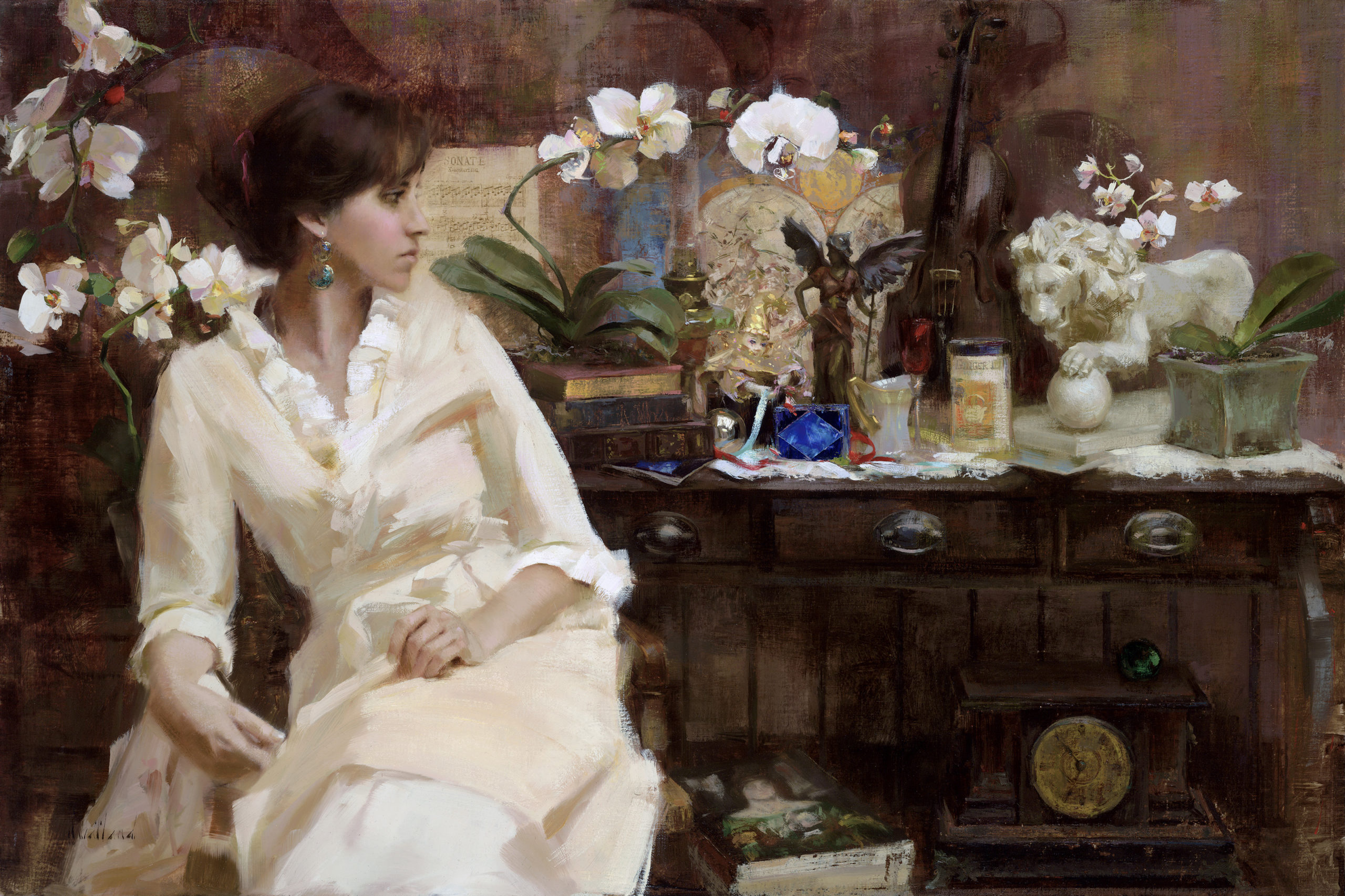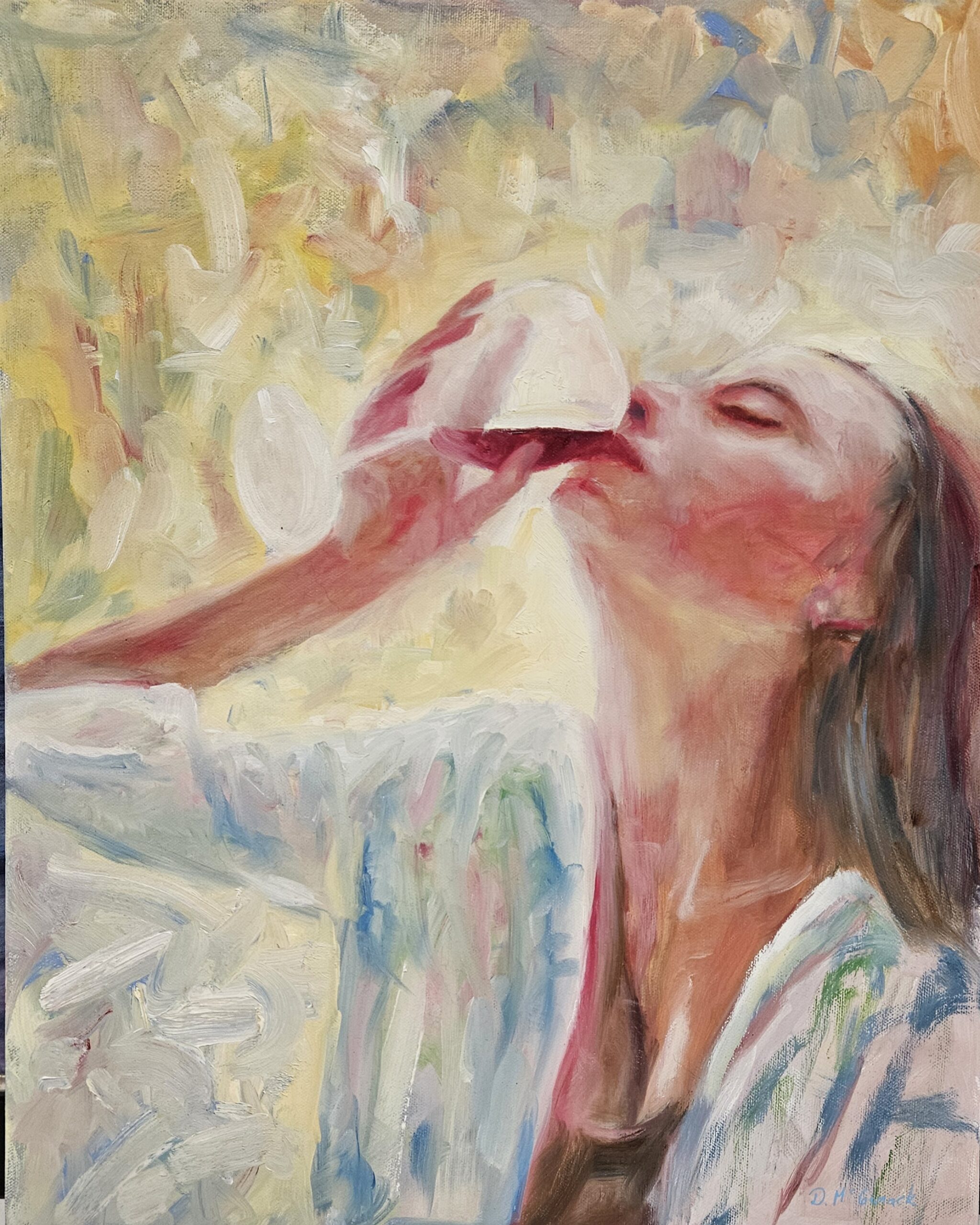Why Figurative Oil Painting Remains a Classic Selection for Artists
The Development of Figurative Oil Paint: Recognizing Its Historic Relevance and Modern Interpretations
The development of figurative oil painting works as a compelling lens whereby to analyze the interaction between creative expression and historical context. From the thorough naturalism of the Renaissance to the stirring power of the Baroque, each age has added layers of significance and technique to this classic medium. Contemporary artists, attracting from this rich heritage, are currently reinterpreting the human figure in ways that test conventional narratives. As we check out these changes, one must take into consideration exactly how the discussion between past and existing informs not only creative practice however also social reflections in a significantly complex globe.
Beginnings of Figurative Oil Paint
The origins of metaphorical oil painting can be mapped back to the very early Renaissance in Europe, particularly in the 15th century. The growth of oil paint allowed for better depth of shade and information, boosting the realism and vibrancy of their work.

In this transformative age, figures were typically portrayed within contextually rich environments, showcasing not just their physical features yet likewise their mental states. Pioneers such as Jan van Eyck and Titian harnessed the tool's convenience, utilizing layering methods to achieve luminance and appearance. This advancement helped with the portrayal of detailed materials and the subtleties of complexion, adding to the growth of portrait and narrative scenes.
In Addition, the Renaissance emphasis on humanism fostered an admiration for uniqueness, which consequently influenced musicians to create even more dynamic and relatable numbers - figurative oil painting. Consequently, metaphorical oil painting became a powerful lorry for storytelling and psychological interaction, laying the foundation for future creative movements and styles
Trick Historical Movements
Considerable historic motions have actually shaped the advancement of figurative oil paint, each contributing special viewpoints and strategies that broadened the tool's opportunities. The Renaissance marked a crucial minute, emphasizing realistic look and the human type, with musicians like Leonardo da Vinci and Michelangelo pushing the borders of anatomical accuracy and viewpoint. Following this, the Baroque era brought remarkable contrasts of light and darkness, exemplified by Caravaggio, who instilled spiritual themes with intense emotionality.
The 19th century presented Romanticism and Realistic look, where artists such as Delacroix and Courbet challenged timeless ideals, concentrating on private expression and day-to-day life. The advent of Impressionism additionally changed the medium by highlighting the impacts of light and shade, leading to a departure from conventional depiction.
In the very early 20th century, activities like Expressionism and Cubism redefined figurative painting through abstraction and the exploration of emotional deepness. Each of these activities not just mirrored the social changes of their times but likewise laid the foundation for modern analyses. The interaction in between these historic movements has created a rich tapestry of viewpoints and styles, influencing contemporary artists in their quest of catching the human experience on canvas.
Methods and Materials Development

Throughout the Baroque duration, techniques such as chiaroscuro and sfumato arised, improving the psychological resonance of metaphorical structures. Musicians began to experiment with glazes and impasto, manipulating structure and luminosity. By the 19th century, advancements like the use of pre-mixed paints in tubes changed ease of access, permitting artists to repaint en plein air and capture the short lived results of light.
The 20th century experienced the intro of synthetic pigments and tools, which expanded the combination and modified the consistency of oil paints. Additionally, the expedition of new application methods, such as palette knives and brushes of differing rigidity, additional varied imaginative expression. Collectively, these improvements mirror the evolving connection in between products, techniques, and the artistic vision intrinsic in metaphorical oil paint.

Contemporary Interpretations
Contemporary interpretations of figurative oil painting reflect a dynamic dialogue between tradition and development, where artists challenge established norms and check out varied themes. This development manifests in different methods, as contemporary artists mix classical strategies with contemporary principles, typically dealing with social, political, and individual stories.
Numerous specialists draw ideas from historic jobs, yet they infuse their pieces with modern viewpoints, making use of the human type as a car for commentary on society, gender, and identification. Artists significantly explore abstraction, distortion, and blended media, which enables published here a more comprehensive analysis of the figure and its context.
In addition, using vibrant shade combinations and non-traditional compositions usually offers to disrupt typical checking out experiences, provoking essential interaction from target markets. This shift in focus prolongs beyond appearances; it shows an expanding understanding of the intricacies of human experience in an interconnected world.
As metaphorical oil painting remains to develop, it continues to be an important tool for checking out the subtleties of contemporary life, symbolizing both a respect for heritage and a commitment to dynamic thought. The outcome is an abundant tapestry of expression that resonates with the intricacies of the modern human problem.
Influence On Modern Art
The influence of figurative oil painting on contemporary art is extensive, as it has constantly influenced a myriad of imaginative movements and practices throughout the 20th and 21st centuries. From use this link Expressionism to Surrealism find out this here and past, the expedition of the human number has actually remained a central style, enabling musicians to share intricate emotions and narratives. This emphasis on figurative representation has actually brought about a re-examination of traditional techniques, leading to ingenious techniques that mix realistic look with abstraction.
In addition, modern musicians have actually welcomed figurative oil painting as a method to address social and political issues, utilizing the medium to test perceptions of society, identification, and gender. The rebirth of passion in metaphorical operate in recent years shows a yearning for connection in an increasingly electronic globe, where human experience and feeling are vital.
Furthermore, the dialogue in between metaphorical oil painting and modern art appears in the jobs of musicians such as Kehinde Wiley and Jenny Saville, who make use of historic recommendations while infusing their pieces with modern significance. Eventually, figurative oil paint remains to shape and redefine modern-day creative expression, highlighting its enduring value in the art world.
Conclusion
The advancement of figurative oil painting emphasizes its historical significance and flexibility across numerous creative movements. From the naturalism of the Renaissance to the stirring expressions of the Baroque and the ingenious approaches of modernity, this tool has consistently transformed. Contemporary analyses show vibrant shades and unconventional make-ups, promoting critical interaction with social and political styles. Ultimately, figurative oil paint remains an essential medium for checking out the human experience, resonating exceptionally in today's electronic landscape.
The development of figurative oil painting offers as a compelling lens with which to check out the interplay between creative expression and historic context.Significant historical motions have actually formed the advancement of figurative oil painting, each contributing special ideologies and techniques that expanded the medium's possibilities.As historic activities formed the trajectory of metaphorical oil paint, the techniques and materials utilized by artists have likewise gone through substantial makeovers. figurative oil painting.The influence of metaphorical oil paint on modern art is extensive, as it has actually continually inspired a myriad of artistic movements and practices throughout the 20th and 21st centuries.The evolution of figurative oil paint emphasizes its historic value and flexibility throughout numerous creative motions